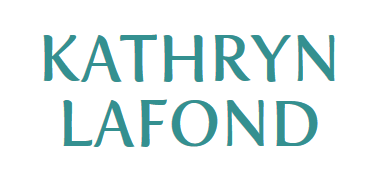I admit, the subject of food–what to buy; what to make; what to eat–is often in my thoughts, although, I may be in the minority. According to author Michael Pollan, we as a culture spend more time watching cooking or reading about cooking than we spend in the kitchen actually cooking. Interestingly, a recent survey reports that the average American is now spending only twenty-seven minutes per day on food preparation. The question that lingers is, are we as a nation unknowingly obsessed with reading about diet, foods, and their scientific affect on our health?
Whether we are or are not, confusion appears to exist around the definition of what is food. A recent diet-related ‘bestseller’ focused on that very question. The answer described the molecular composition. But isn’t something gravely amiss from this conversation? Isn’t it true that food is a gift of life from plant or animal? I believe this oversight is causing enormous imbalances on a world-wide basis. One such imbalance is the loss of over 90% of the USA’s most fertile growing lands. Another imbalance is the creation of CAFO’s, Concentrated Animal Feeding Operations–an unquestionably inhumane way to raise animals to supply mass populations with all the meat we might want. Although flora and fauna are dependent upon one another, in modern industrial agricultural practices the raising of plants and animals has been separated interrupting the natural symbiosis.
We currently have quite the diversity of beliefs in what a proper dietary approach should be. Some believe that to live in healthy bodies we need to eat like our ancient relatives–a paleo diet. Others believe that to live heart-healthy lives we must be vegetarians or to lead conscientious lives we need to be free of all animal products–the vegan lifestyle. Regardless of our choices, the gift of food is the gift of life; an offering of one life to another. To eat means that something will die to bring life to another. That ‘something’ doesn’t need to have a face like ours or physically be able to move about to be recognized as something that dies for us to eat.
Creating death in order for something else to live is the natural cycle of life. It is not an abuse; not something to be guilty about. In Long Life, Honey in the Heart, author Martin Pretchel writes of the Mayan people’s concept of “mutual indebtedness or mutual insparkedness” known as kas-limaal. They say, “The knowledge that every animal, plant, person, wind, and season is indebted to the fruit of everything else is an adult knowledge.”
The exchange of physical sustenance is not only an amazing gift but not something we can live without. Stepping fully into this “adult knowledge” takes courage and will bring us to a new awareness of our place in the web of life. Personally, I have found it necessary, on a regular basis to ask myself, “Am I truly honoring this exchange?” “How can I do justice to that which I have been given?” By bringing my head and heart into alignment with the treasure of the food that I am about to eat or prepare, I find I can truly show up with love, reverence, and respect. As one who loves to eat, I want to be fully invested where savory meets the sacred and whenever we are working with food this is the opportunity at hand. So why not pause to give thanks to the spirit of what you are working with and let go of the belief in a top-down chain of domination to fully engage in the circle of life?
“Am I truly honoring this exchange?” “How can I do justice to that which I have been given?”
Eating and preparing food while recognizing the sacredness of the life in our hands can rebuild a sense of relationship to the Earth. All indigenous cultures understood the symbiotic nature of life feeding life. Early people gave thanks before the hunt, after the kill, and before taking sustenance. Possibly the reason giving thanks fell out of our understanding is because it is no longer a life and death matter to find our own food. This may be true; however, I believe our ancestors lived with more conscious awareness than just giving thanks to “get” something. I believe they were aware that life begets life, yet also aware that a sacred consciousness exists between all things. Life is so interwoven an unspoken communication is always present; this ‘intention’ is not able to be held as secret but is energetically broadcast. What if it is true that the animal or plant knows it will be taken?
To bring our attention back to intentionally honoring the life of another is one way we can return to right relationship with the land and all that it offers. Pausing to bless with gratitude, as a practical, everyday action, will surely take us away from merely mixing a set of ingredients; to remembering that it is a LIFE that we are working with and life-giving.

I have not grown food to eat for many years. In that space of time I have come to Remember the “mutual indebtedness” which you quote from Martin Prechtel. Now I have a tiny little plot of kale courageously growing on the edge of the woods. Each time I gather some of their beautiful leaves – as I take their life with my own hand – I am overcome with deep gratitude to all that made it possible for me to eat those tender morsels. Thank you for your wise words and CONGRATULATIONS on the birth of Seasoned with Gratitude!!!!